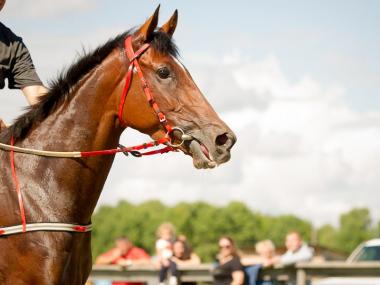Frozen Binomials: Why Do We Cringe at ‘Pepper and Salt’?
“Sticks and stones.” “Bride and groom.” “Heads or tails.” Some word pairs almost always appear in a specific order, and linguists have been investigating why for decades.

Can you put the pepper and salt on the table?
Will you stop walking forth and back; you’re going to wear out the carpet.
I just have to tie up a few ends and odds before I quit for the day.
How many uncles and aunts do you have?
Did you just cringe hearing those backward sets of words as much as I did saying them? It’s an odd, but well-known thing in English — and other languages — that some word pairs, like “sticks and stones,” just sound more “right” when we say them in a certain order.
Linguists call word pairs like this “binomials,” and if the words appear in the same order most of the time, they’re called “frozen binomials.” If words are a jumble of dancers we negotiate into phrases and sentences, imagine frozen binomials as a pair of dancers frozen in place like statues.
I occasionally get questions from thoughtful listeners who have noticed this phenomenon and wondered why it happens. For example, Curt recently asked on Facebook why we say “guys and dolls” or “guys and gals” instead of “dolls and guys” or “gals and guys.”
One theory he had was that maybe we tend to put men before women in such pairs, and he’s definitely on to something!
When I started looking into the question, it kind of blew my mind how many researchers have tried to answer it. Linguists have been testing possibilities for at least 60 years, though one paper I read says you can find people looking into binomials as far back as the ancient Sanskrit philologist Panini, who is sometimes called the father of linguistics.
Researchers have come up with about 20 theories about what determines word order, and those can be consolidated into just a few categories. (And I’ll add that these are all tendencies and not hard-and-fast rules. You’ll probably be able to think of an exception to every reason I name.)
Powerful words go first
The tendency to put men before women, as in “kings and queens,” “brothers and sisters,” and “guys and gals,” falls under the broader category of putting powerful or more important things first (or things that are culturally perceived as powerful or more important first).
One study I just can’t get out of my head was done in 2011 by Peter Hegarty and colleagues at the University of Surrey, and it showed that not only did people put the man’s name first in the names of imaginary couples, but when given two names in an imaginary same-sex couple, people gave the name of the person who had more stereotypically male characteristics first. For example, if Jim and Bob were a couple, and people were told that Jim was physically larger or earned more money than Bob, people would be more likely to say Jim’s name first.
But the powerful-and-important-things-first theory goes way beyond male and female. It includes things like predator and prey (“cat and mouse”), older and younger (“mother and child”), and the amusingly named “condiment rule,” which says that the main element of a meal or dish will come first, and then the side dish or condiment will come second, as in “bread and jam,” “pork and beans,” and “fish and chips.”
And the men-are-more-important-so-they-go-first idea also isn’t universal. For example, we talk about the “bride and groom” at a wedding because the bride is stereotypically the more important person or the more central focus at a wedding. And some people theorize that “mom” goes first in “mom and dad” because a mother is stereotypically more central to a child’s life than a father.
And I have to say, all these stereotypes are really starting to bug me because we know that men aren’t always more powerful and fathers sometimes play the central parenting role, and so on, but these are some of the dominant theories about why word orders are the way they are! So I guess I just have to put up with it. Language does reflect culture, but it can also take a while to catch up.
General words go first
Another big category is that something general will likely come before something specific. For example, we talk about rules and regulations, and rules seem a bit more general whereas regulations often get more into the nitty-gritty of exactly what you can and can’t do.
Marked words go first
The next category, which linguists call markedness, is similar in some ways. The idea here is that things like concrete words usually come before abstract words (as in “heart and soul”), living things come before nonliving things (as in “horse and carriage”), positive things come before less positive things (as in “trial and error,” “friend and foe,” and “winners and losers”), and top comes before bottom (as in “she looked him up and down,” “she is head and shoulders above the rest,” or “call heads or tails”).
Shorter words go first
A simple category is based on an idea named after that father of linguistics from antiquity that I mentioned earlier, Panini. Panini’s law essentially says that everything else being equal, a shorter phrase will come before a longer phrase, and researchers find that often the shorter word comes first in our word pairs, as it has in all but three of the examples I’ve given so far.
The last two categories are those that seem to have shown the strongest correlation with word order: the order of events and how common the word is.
Events that come first go first
The order of events is an incredibly strong predictor of word order, so much so that the first time I read it, I was like, “Well, duh. Of course.”
In “kiss and tell,” there has to be kissing before telling. If you were “out and about” today, you had to go out before you could then go about. And you generally have to crash before you can burn.
And in an example of how there can be a lot of overlap between these categories, “trial and error” could also fall in here instead of under the rule that positive words come first because you also have to try something before you can generate an error.
The most common words go first
The other strong predictor is that words that are used more often typically go first, and again this can overlap with a lot of the other predictors. We use the word “guys” more than “dolls.” We talk about horses more than carriages, bread more than jam, and (according to a Google Ngram search) brothers more than sisters.
Other ideas
Some other ideas researchers have looked at that can matter but don’t seem to play a huge predictive role are the alphabetical order of the words in the pair, the number of syllables, the numbers of consonants at the beginning of the words, and the types of vowels in the words.
The more accessible words go first
One final big, idea that does play a big role and seems to encompass many of the others we’ve run through is that words that are more accessible tend to go first. That means the words we can most quickly bring to mind tend to go first — and often that means words that are shorter, more common, more concrete, or just more familiar to us in some other way.
Frozen binomials versus irreversible binomials
Some word pairs are so frozen that they’ve taken on a meaning beyond their separate parts, and those are called “irreversible binomials.” For example, if I tell you I had jam and bread for breakfast, it might sound a little off, but you’ll still know what I mean. But a phrase like “rock and roll” means something specific — a type of music — and the two parts can’t be reversed. Saying I listened to some roll and rock doesn’t just sound weird, it loses its meaning.
We’ve also talked before about words you only hear because they’ve been fossilized or frozen in set phrases, like “kith” in “kith and kin” and “caboodle” in the whole “kit and caboodle,” and these pairs are considered to be irreversible binomials too because you’d just never talk about your whole “caboodle and kit,” for example. Again, it loses its meaning.
Cultural influences
Rock and roll takes us to cultural influences on word choice because rhymes in songs and poetry can influence word pairs.
We may say “sticks and stones” because it rhymes with “break my bones,” and we may talk about “sugar and spice” because it rhymes with “everything nice.” The 1950s musical “Guys and Dolls” probably solidified that order in the public consciousness.
And famous sayings also influence binomials. We know the word pair “slings and arrows,” for example, because it comes from Hamlet’s famous “to be, or not to be” musings:
Whether ’tis nobler in the mind to suffer
The slings and arrows of outrageous fortune,
Or to take arms against a sea of troubles,
And by opposing end them?
Of course, not every cultural influence sticks, and sometimes artists break common orders to fit a rhyme or rhythm. We might say we are working day and night, but there’s also the popular song by Cole Porter that talks about “night and day.” The drink is called a gin and tonic because gin is the more important element, but Billy Joel sang about “tonic and gin” in “Piano Man” because it rhymes with “The regular crowd shuffles in.”
Familiar patterns get repeated
One phrase can also influence another phrase. For example, there are multiple word pairs that begin with “nice” — “nice and easy,” “take it nice and slow,” “the cabin was nice and toasty” — so if you’re coming up with a new pair that includes the word “nice” on the fly, your brain is likely to start with “nice” because that’s how you’ve heard it before in other pairs. “Well, didn’t you get nice and grimy in the garden today!”
‘Uncles and aunts’ becomes ‘aunts and uncles’
I’ll end this segment with a fascinating example of frozen word pairs that have actually thawed, changed, and refrozen. This is something that almost never happens, but it did in the last century with family terms. “Uncles and aunts” and “nephews and nieces” used to be the standard order. Those and a few other pairs of family relationship words used to follow the “male first” order but then switched to the female-first “aunts and uncles” and “nieces and nephews” order that sounds right to us today.
It’s a story that goes back to word frequency, the ease of remembering words, and the influence of other phrases.
First, researchers Adele Goldberg and Crystal Lee from Princeton determined that the word “mother” was used about 100x more frequently than the words “dad” or “daddy” from 1900 to 1950, and that during this time, the word pairs “mother and daddy” and “mother and dad” were common. They think “mother” came first precisely because it was so much more common, and therefore it’s the word that comes to mind first when you’re thinking of parents. They believe that these phrases then influenced people to make the shift of putting “ma” first in “ma and pa.” These pairs in turn influenced the shift to “grandma and grandpa,” “aunts and uncles,” and finally “nieces and nephews.”
It’s still a weak effect, though, and hasn’t overcome orders like “sons and daughters” that keep the male-first pattern because “sons” is both much shorter and a more frequently used word than “daughters.”
The whole study is really fascinating, and you can find a link to it below.
Summary
Those are the many reasons one word might come before another in a word pair. How frequent, how short, and how easy it is to access a word from memory all play a big role, as does the order of events if that’s relevant to the pair. But you also can find an exception to every rule.
As we so often find, language is rich, varied, and complicated. We might want simple answers, but what we find instead are just trends and interesting stories, which I actually like better than simple answers sometimes.
Image courtesy of Shutterstock.
Sources
Benor, Sarah and Roger Levy. “The Chicken or the Egg? A Probabilistic Analysis of English Binomials.” Language, vol. 82 no. 2, 2006, p. 233-278. Project MUSE, doi:10.1353/lan.2006.0077. (accessed February 22, 2022).
Boers, Frank and Lindstromberg, Seth. “Structural elaboration by the sound (and feel) of it” in “Cognitive Linguistic Approaches to Teaching Vocabulary and Phraseology” 2008, p. 338-345. New York : Mouton de Gruyter
https://books.google.com/books?id=nEGN5KYHCGIC&pg=PA338&lpg=PA338&dq=frozen+binomials&source=bl&ots=HPJnZCIKGb&sig=ACfU3U1tWQK__JhV5IKMnxKClaACUfCkAg&hl=en&sa=X&ved=2ahUKEwjuuJK8rY_2AhWjIUQIHRHwC5gQ6AF6BAgiEAM#v=onepage&q=frozen%20binomials&f=false (accessed February 22, 2022).
George, Eli, “Competing Semantic and Phonological Constraints in Novel Binomials.” 2020. WWU Honors Program Senior Projects. 405. https://cedar.wwu.edu/wwu_honors/405 (accessed February 22, 2022)
Goldberg, Adele E. and Lee, Crystal. “Accessibility and historical change: An emergent cluster led uncles and aunts to become aunts and uncles.” Frontiers in Psychology. Special issue on Emergentist Approaches to Language. Patricia Brooks (ed.). https://adele.princeton.edu/wp-content/uploads/sites/277/2021/04/Constructional-diffusion_Final_2021_singlesp.pdf (accessed February 22, 2022).
Klégr, Aleš and Čermák, Jan. “Binomials in an historical English literary perspective: Shakespeare, Chaucer, Beowulf” in “Shakespeare between the Middle Ages and
Modernity”: Procházka, M. and Čermák, J. (eds). 2008, pp. 40-62,
https://www.researchgate.net/publication/309733937_Binomials_in_an_historical_English_Perspective (accessed February 22, 2022).
Mollin, Sandra. “The (Ir)reversibility of English Binomials” John Benjamins Publishing Company. 2014. https://books.google.com/books?id=BA1aBAAAQBAJ&printsec=frontcover#v=onepage&q&f=false (accessed February 22, 2022).
Van Koevering, Katherine; Benson, Austin R.; Kleinberg, Jon. “Frozen Binomials on the Web: Word Ordering and Language Conventions in Online Text.” WWW ’20: Proceedings of The Web Conference 2020. April, 2020, p. 606-616. https://dl.acm.org/doi/10.1145/3366423.3380143 (accessed February 22, 2022).





